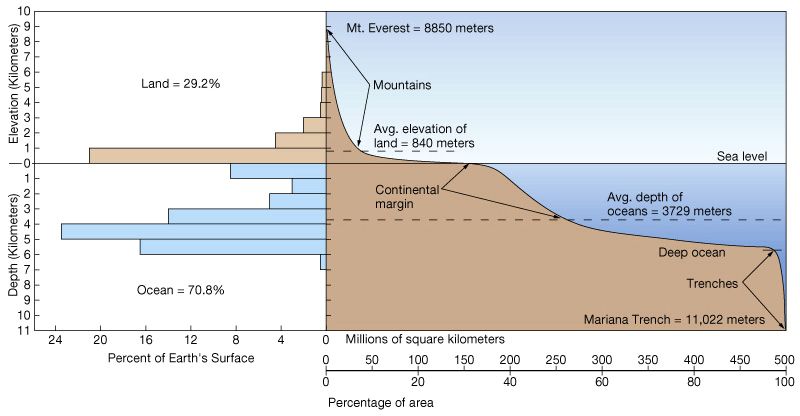 My two and a half readers should know I am fond of Grado cartridges for reasons that go beyond the inherent value and performance. Soon after I started spinning vinyl records again, I wanted a cartridge my Thorens turntable deserved. I asked for advice on TNT-Audio and among the various brand names among which I was solicited to search there was Grado. I already had amazing Grado headphones. The Italian name also kind of attracted me, so I went for the top of the Prestige line, the first edition of the Gold cartridge. Many years later I learned it was loaded with an 8MZ-v stylus. It must have been a mistake at Grado Labs while assembling the very specimen that would find its way to my address. Much, much later I discovered the 8MZ was considered a noticeable upgrade for Prestige cartridges. For years, I ran that cartridge with no realization about this. I didn’t even know how important was to correctly setup a floating chassis turntable like the Thorens. I finally consumed the stylus I though was just a Gold 0 and replaced with a then new Gold1 stylus. That’s when I discovered the Audiokarma forum.
My two and a half readers should know I am fond of Grado cartridges for reasons that go beyond the inherent value and performance. Soon after I started spinning vinyl records again, I wanted a cartridge my Thorens turntable deserved. I asked for advice on TNT-Audio and among the various brand names among which I was solicited to search there was Grado. I already had amazing Grado headphones. The Italian name also kind of attracted me, so I went for the top of the Prestige line, the first edition of the Gold cartridge. Many years later I learned it was loaded with an 8MZ-v stylus. It must have been a mistake at Grado Labs while assembling the very specimen that would find its way to my address. Much, much later I discovered the 8MZ was considered a noticeable upgrade for Prestige cartridges. For years, I ran that cartridge with no realization about this. I didn’t even know how important was to correctly setup a floating chassis turntable like the Thorens. I finally consumed the stylus I though was just a Gold 0 and replaced with a then new Gold1 stylus. That’s when I discovered the Audiokarma forum.
Author: Pasquale Robustini
How Mountains are Made
 The surface of our planet varies greatly in altitude. In fact about ¾ are covered by seawater, whose average level has been conventionally chosen as a reference for the surface elevations. The statistical analysis of the elevations of the earth’s surface shows us something interesting: the highest percentage of the elevations is around two particular values that are the average level of the ocean floor (about -3790) and the average level of the emerged lands (about 840 m).
The surface of our planet varies greatly in altitude. In fact about ¾ are covered by seawater, whose average level has been conventionally chosen as a reference for the surface elevations. The statistical analysis of the elevations of the earth’s surface shows us something interesting: the highest percentage of the elevations is around two particular values that are the average level of the ocean floor (about -3790) and the average level of the emerged lands (about 840 m).
On the relative graph of the percentage distribution of the areas with respect to the altitudes, called “hypsographic curve”, it can be noted that the portions of surface that reach the minimum altitudes (about -11000 m of the Mariana Trench) and the maximum ones (8850 m of Mount Everest) are a very small fraction of the total.
In a nutshell, the mountain ranges are almost an exception, as are the oceanic trenches, on the surface of the Earth. They appear in so-called belts, which are considerably more developed in one direction than in the other. But what is it that keeps them standing at such exceptional altitudes compared to most of the land above ground?
Earthquakes for dummies
 A bit of a big headline. I’ll explain the earthquakes. Who do I think I am? Well… I’m a geologist. I know the problem. If you want to know about heart attacks, you ask a cardiologist, right? If your tap leaks you call the plumber, not a cardiologist. Or am I wrong? Geologists know about earthquakes. They have to. It’s a must. Even if they’re not going to deal with earthquakes in their career, they must be familiar with the phenomenon. So, by academic background geologists know very well that earthquakes are an entirely natural phenomenon over which man has no influence. Earthquakes happen because Earth’s lithosphere (the most superficial rocky envelope of the planet) is divided into a series of plates and microplates; most of the earthquakes are distributed along palte margins because plates move one with respect to the other. And huge blocks of rock “rubbing” each other make a big mess. The “mess” are earthquakes: rock breaks, and the energy released at the moment of breaking propagates in all directions in the form of seismic waves, oscillations of the rocky body that of course involve the surface on which we live. They are waves completely similar to those generated by a rock thrown into the water (but they are not only those – it’s just to give an idea).
A bit of a big headline. I’ll explain the earthquakes. Who do I think I am? Well… I’m a geologist. I know the problem. If you want to know about heart attacks, you ask a cardiologist, right? If your tap leaks you call the plumber, not a cardiologist. Or am I wrong? Geologists know about earthquakes. They have to. It’s a must. Even if they’re not going to deal with earthquakes in their career, they must be familiar with the phenomenon. So, by academic background geologists know very well that earthquakes are an entirely natural phenomenon over which man has no influence. Earthquakes happen because Earth’s lithosphere (the most superficial rocky envelope of the planet) is divided into a series of plates and microplates; most of the earthquakes are distributed along palte margins because plates move one with respect to the other. And huge blocks of rock “rubbing” each other make a big mess. The “mess” are earthquakes: rock breaks, and the energy released at the moment of breaking propagates in all directions in the form of seismic waves, oscillations of the rocky body that of course involve the surface on which we live. They are waves completely similar to those generated by a rock thrown into the water (but they are not only those – it’s just to give an idea).
Continue reading on Substack…
Earthquakes in Rome
Rome has been hit by earthquakes in the past. There is also evidence on monuments, starting from the Colosseum, as well as evidence of the period. On a general level, I wouldn’t worry much about the “if”. Italy is a seismic zone, nothing much can be done about it. And earthquakes are a natural, inevitable phenomenon. I became a geologist with a thesis on geological structures in the immediate vicinity of Rome. The idea of our supervisor started from morphological features (linear “engravings” visible from satellite imagery – there was no Google Earth to help us) that in the north-south direction seemed to affect the area of Italy’s capital. The question was: do they correspond to seismogenetic structures, i.e. capable of generating earthquakes? So we looked for traces of similar faults on the field… and found them.
Passions are eventually good for something…
As is evident from this website, I have always been a person of multiple interests. I’ve never focused on a single object. I need to vary, to wander. For me, doing the same thing is a bit like being in prison. Clearly, those who focus all their energy on one subject have a lot of chances to succeed in that field. I’ve always criticized myself for dispersing my energies on so many things without ever making a really good one. Then someone pointed out to me that there are also pentathletes and decathletes. It’s a personal trait. And nowadays I have to say it’s been my luck…
Grado Prestige reaches level 3
 I’ve always been fond of hifi products from Grado Labs, this is no secret. I also sympathize with the Grado family for some reasons. They have just revived their phono cartridge lines. My beloved Prestige Series are now at the number 3 edition. And rumor has it they are excellent! Mine is not a review nor a test. I don’t have any Prestige 3 yet (maybe). I’m just summarizing what I heard from others. Basically, it seems the whole Prestige 3 Series is hands down superior to the preceding Prestige 2. Of course John Grado seems to be convinced about it, but some early purchaser is already listening something better out of their new Prestige 3 Series…
I’ve always been fond of hifi products from Grado Labs, this is no secret. I also sympathize with the Grado family for some reasons. They have just revived their phono cartridge lines. My beloved Prestige Series are now at the number 3 edition. And rumor has it they are excellent! Mine is not a review nor a test. I don’t have any Prestige 3 yet (maybe). I’m just summarizing what I heard from others. Basically, it seems the whole Prestige 3 Series is hands down superior to the preceding Prestige 2. Of course John Grado seems to be convinced about it, but some early purchaser is already listening something better out of their new Prestige 3 Series…

